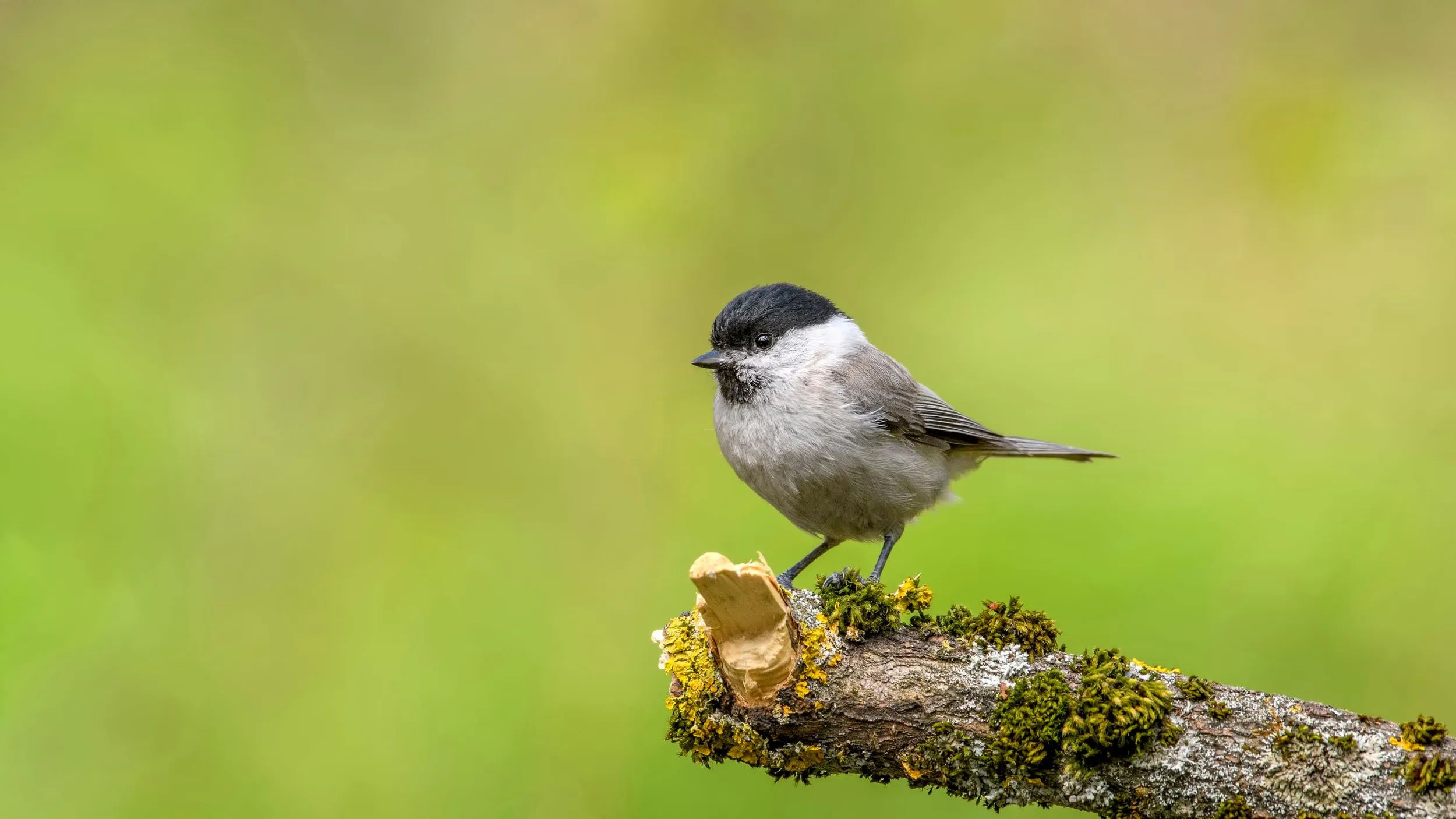Sounds of... Woodlands
The Sounds of Woodlands takes you on a sun-dappled audio tour of the birds that live among the trees.
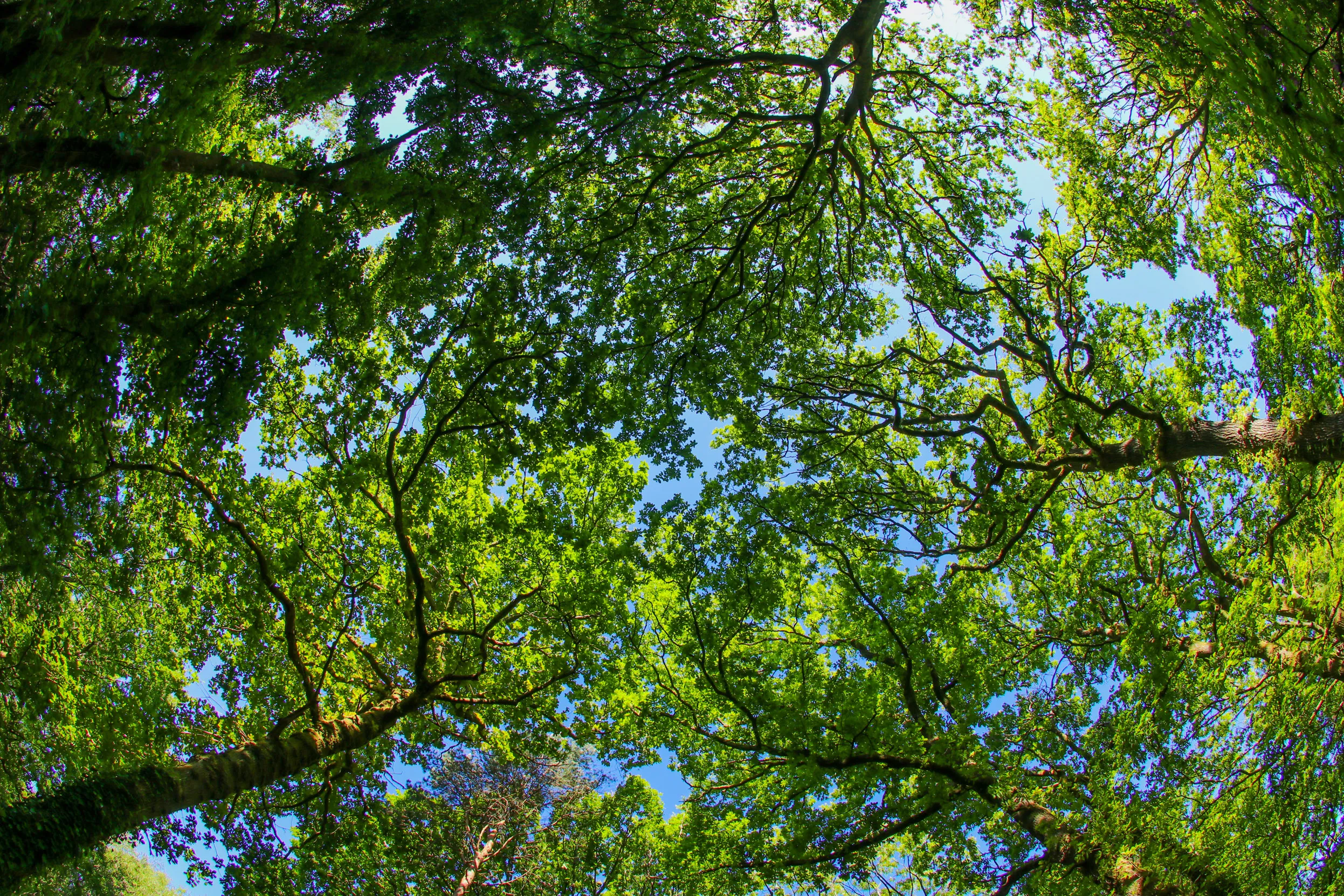
On this page
So whether it is the angry screech which gives away a Jay or the dynamite drumming skills of the Great Spotted Woodpecker, we hope this guide will help you identify the calls of some of the species which sing, or shout, as you head out into the woodlands this spring and summer.
Of course, many of our more common birds also live in woods. You can hear their songs in the Sounds Of… Parks and Gardens and Sounds of Parks and Gardens – Tits and Finches pages.
Chiffchaff
The Chiffchaff is a small olive-coloured bird which hardly sits still, flitting through the trees and shrubs looking for insects and spiders.
Blackcap
We’ll start with the obvious – the Blackcap has a black cap. Well, the male does, the female’s more of a chestnut. Both are grey and around the size of a Chaffinch. Some winter here, but many more return to our shores in spring to breed.
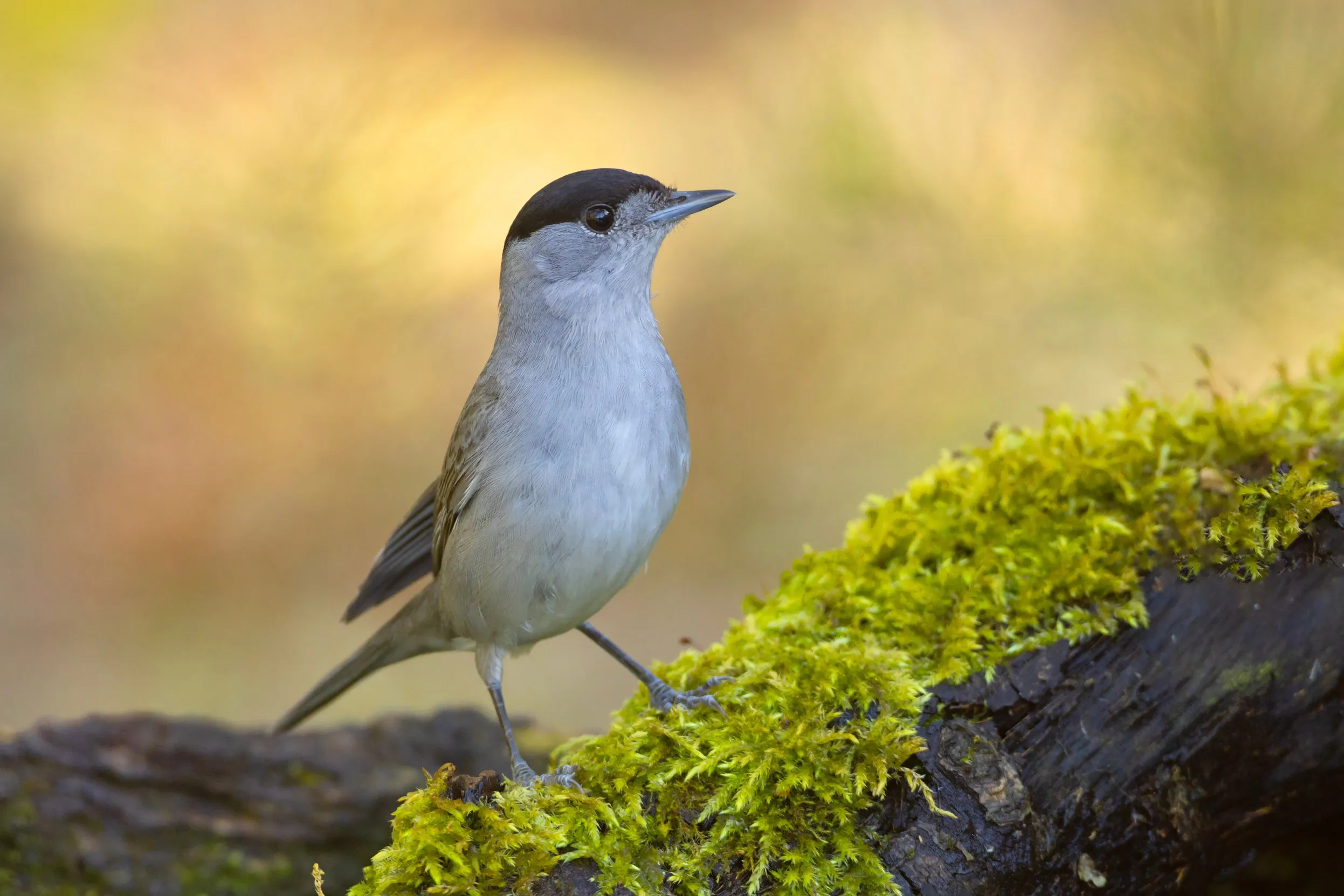
Willow Warbler
The Willow Warbler shares the same stylist as the Chiffchaff, and it’s pretty hard to tell these birds apart. But they do often have slightly paler legs and their eye stripe is longer and more yellow.
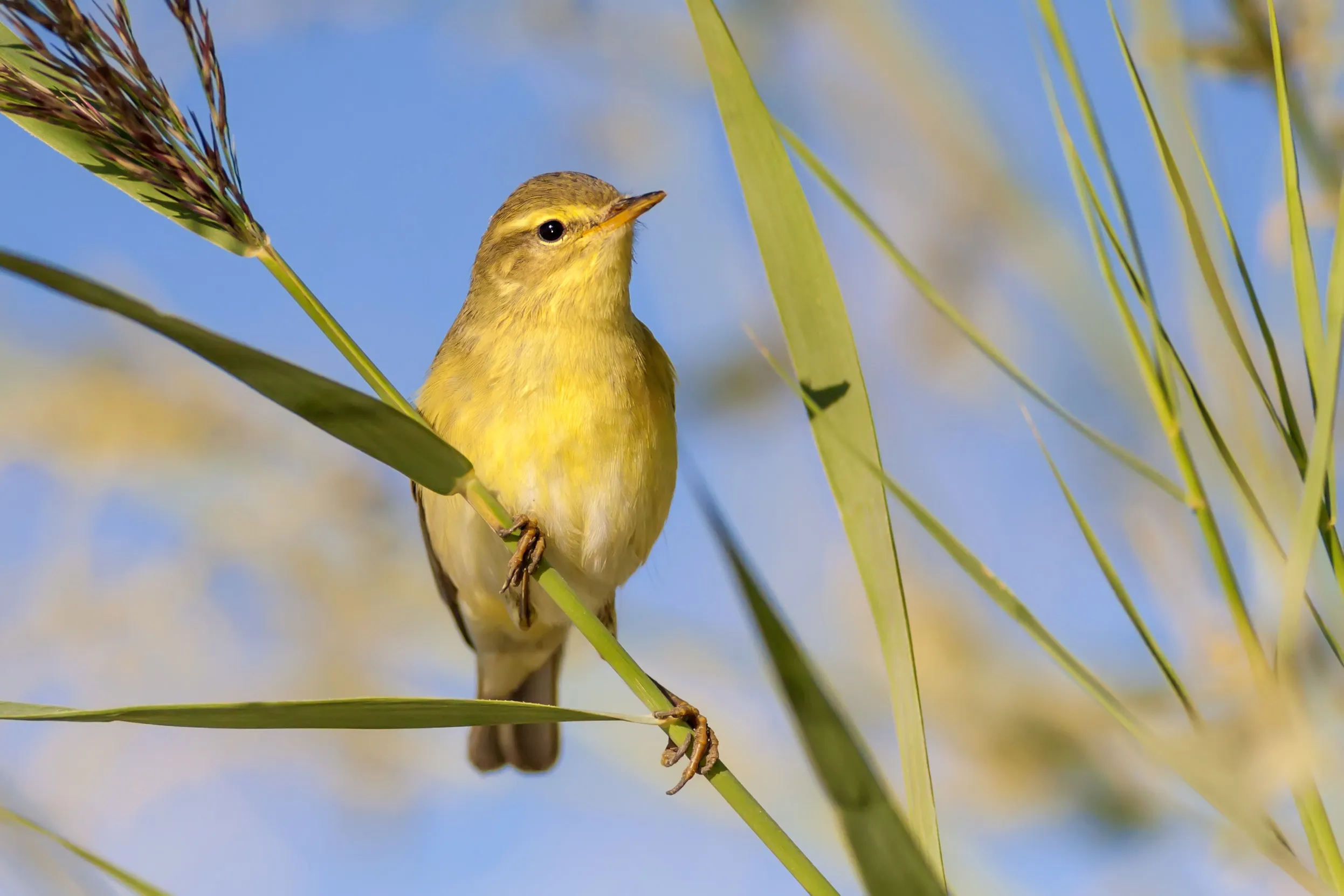
Jay
Our most colourful crow, the Jay puts the rest to shame with its pastel pink plumage and wings of black, white and electric blue. Despite their hot looks, they are shy and difficult to spot.

Goldcrest
With a golden crown and a Latin name that literally means little king, the tiny Goldcrest is woodland royalty. Usually spotted in coniferous woodland on the hunt for spiders and bugs.
Great Spotted Woodpecker
The Great Spotted Woodpecker is around the size of a Blackbird, but with a jazzier outfit of black and white, with a red rump. Males have a matching red patch on the back of their neck which is there all year round, ruling out sunburn.

Tree Pipit
The Tree Pipit is a summer visitor dressed for safari, with brown streaky wings and head, and a dappled buff-coloured chest. They do look a little like a small Song Thrush and a lot like a Meadow Pipit
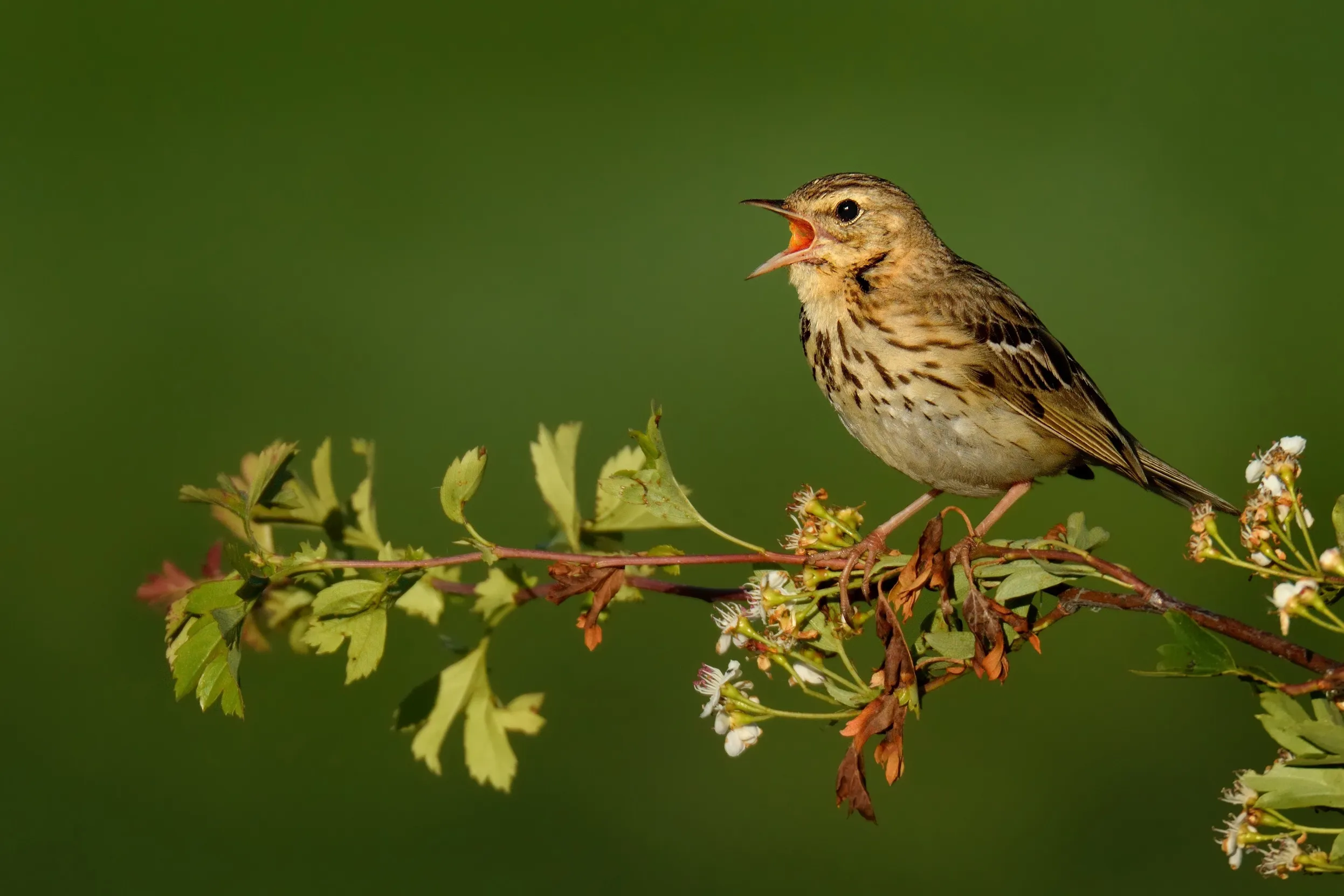
If you're lucky, you might hear...
Pied Flycatcher
The Pied Flycatcher is a small black and white bird, with the male bolder in its outfit choice than the browner and more subtle female. They head to the UK’s western woodlands every summer, darting from branches to catch lunch.
Common Redstart
Well for a start the Common Redstart is red, at least the male is. They’re about the size of a Robin, but with a black mask and a silver-grey cape like a feathery superhero. The female is browner and both can be seen in the Western parts of the UK during spring and summer.
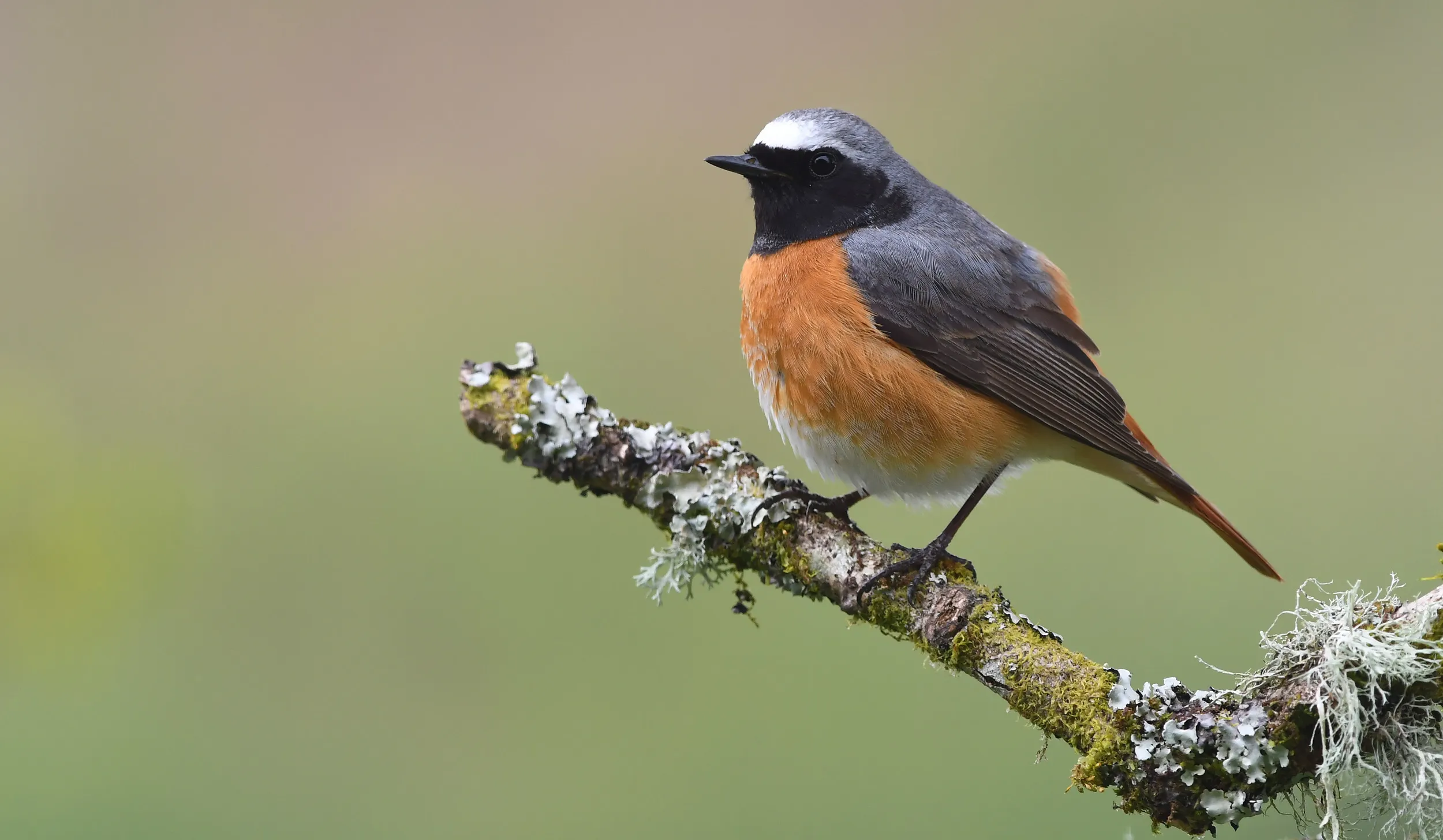
Wood Warbler
A burst of summery citrus, the Wood Warbler is larger than other warblers with a beaming yellow breast and eye stripe. Particularly fond of oak forests in the west of the UK.

Marsh Tit
The Marsh Tit is a small mainly brown tit but with a black head. A bit like the Coal Tit without the bald patch. It’s a lot like the Willow Tit, so much so they were thought to be the same species for many years. The name is a cunning attempt to remain aloof as they’re more often found in woodlands.
